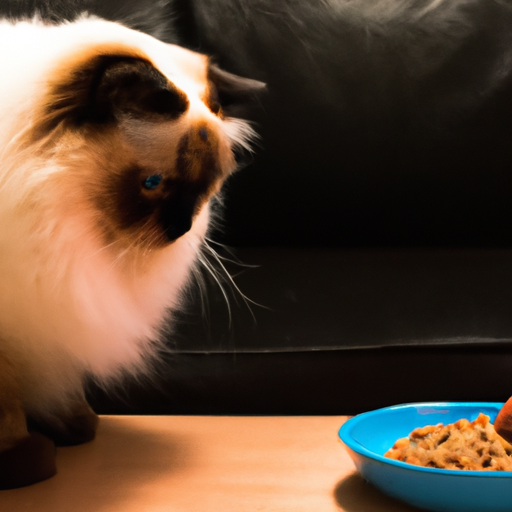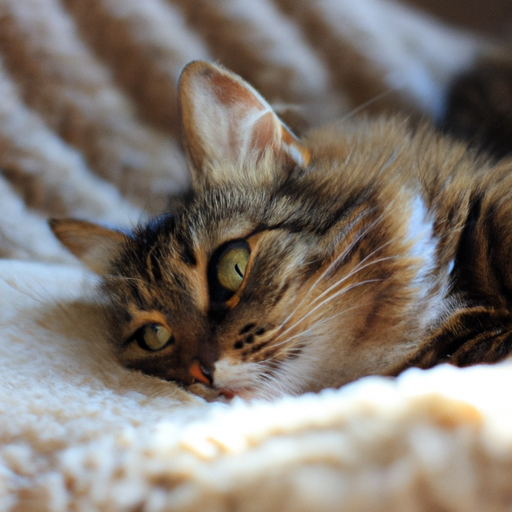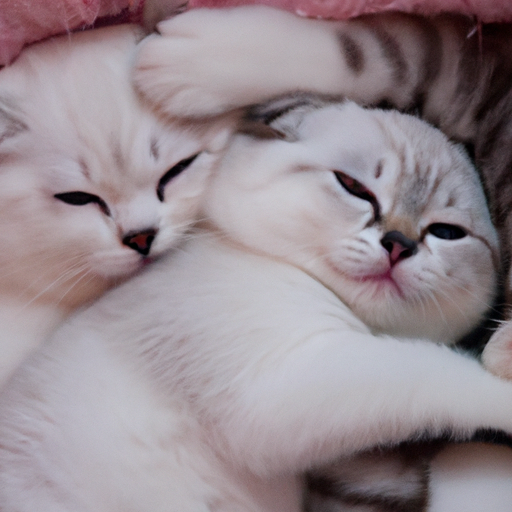What Do Cats Eat?
Ever wondered about what nourishes those graceful, four-legged, furry companions of ours that meow? Those curious eyes are often drawn to anything that moves, including the food you’re nibbling on. But you may be pondering: ‘What exactly do felines feast on?’ Does your heart pound with curiosity?
In their natural habitat, these nimble and versatile hunters fall in the category of strict carnivores. Their meals typically consist of small rodents, birds, and other creatures of a similar size. Yet, for domesticated felines, a balanced diet of processed feline chow – often composed of meat, grains, vegetables, and a myriad of vitamins – is recommended. The occasional treat of milk or fish is generally loved by these lovable beings, though moderation is essential. An eclectic mix, isn’t it? An assortment surprising in its extent even as it underscores their predatory instincts.
Understanding Cats’ Dietary Needs
Consider a moment to gaze upon a cat; svelte, aloof and composed. It’s in their nature to exude an air of beautiful mystery. Yet, beneath that demure demeanor, you’ll find a complex creature with unique dietary needs that have evolved over countless generations.
The carnivorous nature of cats
You, there, with the cat, sitting elegantly on the armrest of your plush sofa, know this: your furry friend is, in fact, a carnivore at heart. Their ancestors roamed wild, hunting smaller prey to satiate their dietary needs. They crave and need high-quality animal protein to thrive. It’s not just a matter of preference – it’s biology.
How cats’ dietary needs contrast those of dogs
If you’re a seasoned pet parent housing both dogs and cats under your roof, you may have noticed this fundamental difference: while dogs are more omnivorous, cats tend to lean towards carnivorous diet. The reason is clear. Cats require certain essential nutrients not found inherently in plant-based food, but abundant in meat, such as taurine, arachidonic acid, vitamin A and vitamin D.
The domestic cat’s diet compared to wild felines
While your domestic cat lounges on a cosy cushion, far removed from the hardships of life in the wild, their dietary needs harken back to those of their rugged ancestors. Wild felines feast on the entirety of their prey — bones, organs and all. This provides a balanced, natural intake of proteins and nutrients. Domestic cats, while more pampered, share similar needs.
Commercial Cat Food: An Overview
Do a simple search online or walk down the pet food aisles of a supermarket, and you’re sure to be greeted by an overwhelming array of commercial cat food. What’s the catch? Here’s what you need to know.
Types of commercial cat foods
Commercial cat foods can be broadly divided into dry, wet, and semi-moist types. Each type has its pros and cons, varying in nutritional value, convenience, and palatability among others. Wet food, for example, boasts a high water content advantageous for hydration, while dry food often offers dental health benefits.
Ingredients in commercial cat food
Every loving cat owner wants the best for their feline friend, but that can be challenging given the baffling list of ingredients on commercial cat food labels. Here’s a tip: opt for foods with a named meat (like ‘chicken’ or ‘beef’) as the first ingredient, rather than animal by-products or ‘meat meal’.
Understanding cat food labels
Decoding cat food labels may seem like deciphering hieroglyphics, but it’s crucial to ensure you’re providing a healthy diet. Be mindful of words like ‘complete’, ‘balanced’, and ‘all life stages’, as they denote whether the food meets the dietary needs for a particular stage of your cat’s life.

Homemade Cat Food and Its Advantages
While commercial cat food is convenient, homemade cat food is increasingly being favoured by some cat owners. Why? Let’s delve in.
Nutrition control in homemade cat food
Given the occasional scandals involving pet food brands and the ambiguity on commercial cat food labels, homemade meals can offer peace of mind with full control over what your cat is consuming. This ensures high-quality ingredients, tailored to your cat’s dietary needs.
Possibility of allergies reduction
With an increase in pets presenting food allergies, homemade meals offer a prudent solution as they allow you to monitor and adjust the meal composition to better cater to your feline’s sensitivities, potentially reducing allergic reactions.
Enhancing cat’s diet diversity
Tailoring meals also means a wider range of ingredients can be introduced, improving diet diversity. However, it’s important to note here that variation should be gradual and monitored to avoid digestive upset.
Risks Associated with Homemade Cat Food
While homemade cat food tosses control back to the owner, it’s not without its complications.
Potential nutrient deficiencies
Preparing a nutritionally balanced meal for cats is not as simple as it sounds. Mistakes could lead to nutrient deficiencies or excesses, proving harmful to the cat. Professional guidance is highly recommended if one decides to go this route.
Risk of foodborne diseases
Furthermore, without the rigorous standards upheld by commercial food manufacturers, homemade cat food runs the risk of contamination with harmful bacteria or parasites. Safe food handling and preparation practices are vital.
Time and cost considerations
There’s undeniable charm in crafting meals from scratch but bear in mind, it’s time-consuming. And the cost can quickly add up, especially if you’re sourcing high-quality ingredients.








